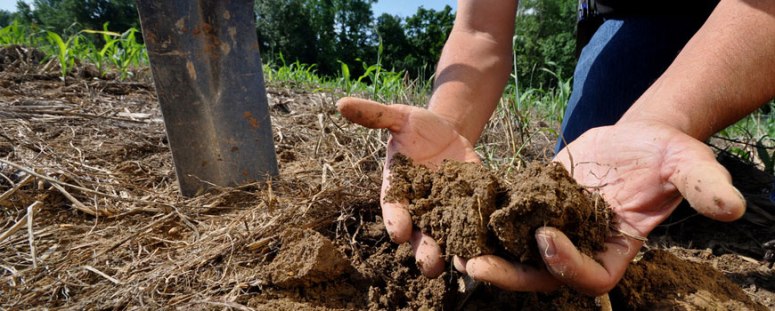Soil is made up of minerals, organic matter (living and dead), air and water. Soil provides nutrients and serves as a foundation for plants. Improving your soil increases plant health and is critical to growing a lawn or garden you’ll enjoy for a lifetime.
Plant growth and vigor are often dependent on soil pH — the measurement of how acidic or alkaline the soil is. Soil pH is measured on a scale of 1 to 14 with a measurement of 7.0 considered neutral. A number below 7 is acidic (sometimes called “sour”); a number above 7 is alkaline (“sweet”). Most plants prefer nearly neutral soil with a pH between 6.2 and 7.2. Some (such as azaleas) prefer a more acidic soil.
Soil testing kits include vials and tablets to test your soil, as well as a chart to interpret the results. With testing meters, you simply insert the meter probe into the soil and read the results. Follow the manufacturer’s instructions for these home-testing solutions.
To prepare a soil sample to send for analysis, you’ll need a clean bucket, a garden trowel and a clean plastic (not metal) container. The steps are simple, but they should be followed carefully to get an accurate reading.
Your local cooperative extension office can test your soil sample for pH and nutrient levels (some states charge a small fee). The soil analysis usually takes a few weeks to process. The analysis includes detailed results and suggested amendments specific to your region.
- Thoroughly clean the tools you are using to collect the soil sample.
- In the planting area, dig five holes 6 to 8 inches deep.
- Take a 1/2-inch slice along the side of a hole and place it in the bucket. Repeat this process for all holes.
- Collect samples from different areas that will be growing similar plants.
- Mix the soil in the bucket. Spread the soil on a newspaper to dry out. Collect a pint for your sample.
Improving Acidic Soil:
Adding garden lime to acidic soil.
Most native soils in the eastern United States are naturally acidic. Alaska, Hawaii and parts of the Pacific Northwest tend towards acidic soil as well. Acidic soil is a good environment for thatch, weeds and diseases and also reduces the effectiveness of your fertilizer or herbicide.
Garden lime, or limestone, is the soil amendment usually recommended for reducing soil acidity. Lime also is a natural source of calcium and magnesium—elements necessary for healthy plant growth. Correction of an overly-acidic soil is a long-term project that takes time to complete. Fall is the best time to apply garden lime, but it can be applied any time of year.
Improving Alkaline Soil:
Alkaline soils are most common in the central and southwestern United States, which are generally areas with less rainfall. Alkaline soil restricts a plant’s ability to take in nutrients (such as iron).
Soil conditioners with sulfur is a common amendment to improve alkaline soil. Sphagnum peat moss is an organic, naturally acidic alternative; however, it may not be cost-effective to apply to large areas. Organic compost can increase soil acidity if applied regularly.

